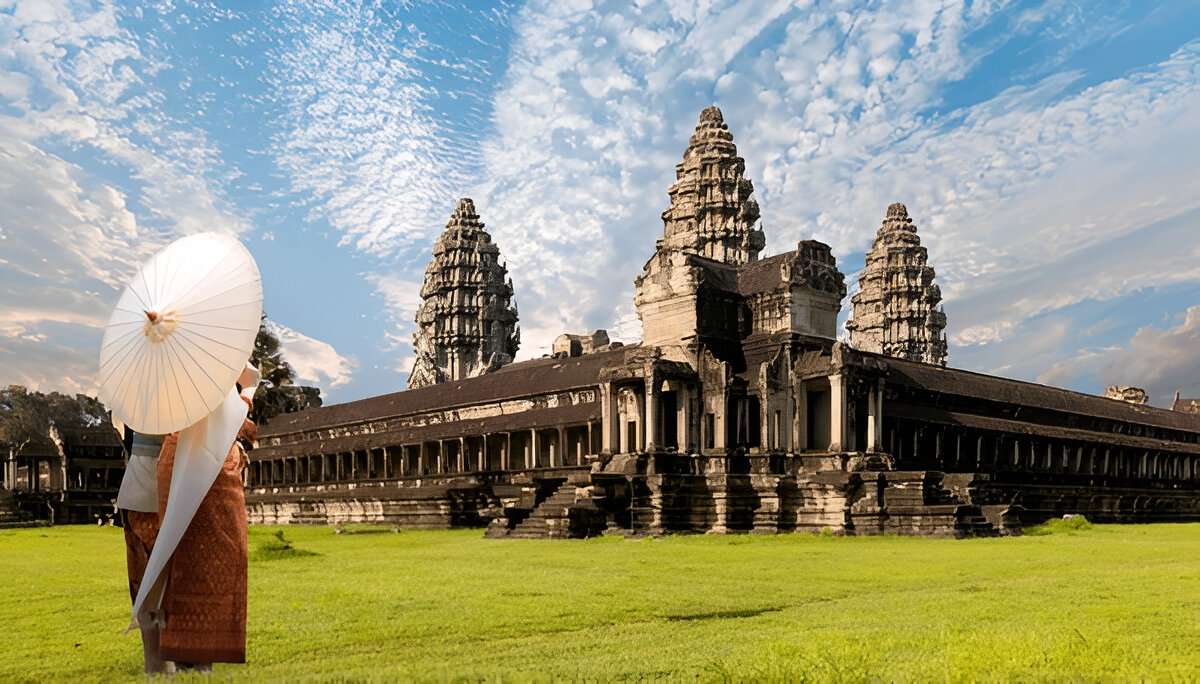Within the centre of Cambodia, where the rhythms of rural life pulse softly, is a legacy as ancient as the Khmer Empire itself—the skill of silk weaving. Passed down through generations, this old technique is more than just producing exquisite fabrics; it’s a living tribute to Cambodia’s cultural legacy and the people’s resiliency. From the fine threads of golden silk to the expertly woven designs, Cambodian silk tells a tale of pride, patience, and talent. One must visit the weaving villages, where the looms hum and the hands of artists bring history to life, if one wants to appreciate this art form.
The Golden Threads of Cambodian Silk
Often known as “golden silk,” Cambodian silk is prized for its unusual gloss and robustness. The golden cocoons of the silkworms native to the area provide this unique feature—a thread that shimmers like sunlight. From breeding silkworms to dying threads and weaving complex designs, the labour-intensive process of making silk calls for a thorough knowledge of every step.
Villages like Koh Dach, just a short drive from Phnom Penh, have a vibrant silk-weaving legacy. Families cooperate in small workplaces here, their looms arranged under stilted homes surrounded by verdant gardens. A continual soundtrack, the repetitive clanking of the looms, reminds us of the commitment and patience needed to produce every piece of fabric. Seeing an artist at work is hypnotic; their hands move precisely, threading the shuttle back and forth as a pattern slowly develops.
Each design tells a tale or symbolizes a cultural concept, although the patterns have their language. Every piece of Cambodian silk is a work of art, from geometric patterns to minute images of nature. These designs link to the past, a means of safeguarding the Khmer people’s customs and history rather than only decoration.
The Weaving Villages: Keepers of Tradition
Other weaving communities outside Koh Dach provide a window into this age-old trade. Phnom Srok in Takeo Province is well-known for its traditional ikat weaving methods and superior silk. Ikat, a technique of dying threads before weaving- unique to every item creates complex, hazy patterns. Completing a single scarf or sarong requires weeks or months of intense, time-consuming effort.
The Kreung and Tampuan ethnic minority groups in the northeastern province of Ratanakiri have their weavers. Their vivid textiles, which mirror the hues of the surrounding terrain, are produced from natural dyes derived from roots, plants, and tree bark. These groups have maintained their methods for millennia, passing on their expertise from mother to daughter in an intact line of inheritance.
Seeing the weaving technique is only one benefit of visiting these towns; another is interacting with the people working behind the craft. Many craftspeople are eager to tell their stories, illuminating the meaning of their creations and the difficulties they have maintaining their customs alive. It’s a sobering reminder of every silk thread’s human work and passion.
The Challenges of Preserving a Legacy
Although Cambodian silk is prized for its beauty, the business struggles greatly. The advent of mass-produced, less expensive fabrics has left traditional weavers less able to compete. Many young people are leaving their communities to pursue better possibilities, reducing the number of craftspeople who can continue in the trade.
Groups like the Institute for Khmer Traditional Textiles (IKTT) and the Artisans Association of Cambodia (AAC) are working to meet these difficulties. They seek to empower weavers and guarantee the sustainability of this age-old art form by offering market access, tools, and training. Purchasing handcrafted silk or visiting weavers helps support these projects and preserve Cambodia’s cultural legacy.
A Tapestry of Culture and Resilience
Cambodian silk is a tapestry spun with threads of history, culture, and resiliency, not only a cloth. Every piece relates a narrative of the hands that created it, the neighbourhood that raised it, and the customs that motivated it. Wearing Cambodian silk is like carrying a bit of this narrative with you, a reminder of the beauty and force of the human spirit.
You will be very close to this age-old craft as you stroll through the weaving villages, observing artists at work and hearing the buzz of their looms. It reminds us that careful, deliberate work has a place even in a world of quick fashion and passing trends. Cambodian silk is a heritage, a gift from the past to the present rather than only something to buy.
Thus, the next time you visit Cambodia, spend some time visiting a weaving community. Sit among the craftspeople, hear their tales, and wonder at their ability. Doing this will give you a greater respect for this exquisite work and help ensure it exists for future generations.
More Articles: Exploring Cambodia’s Cave Temples & Underground Wonders

